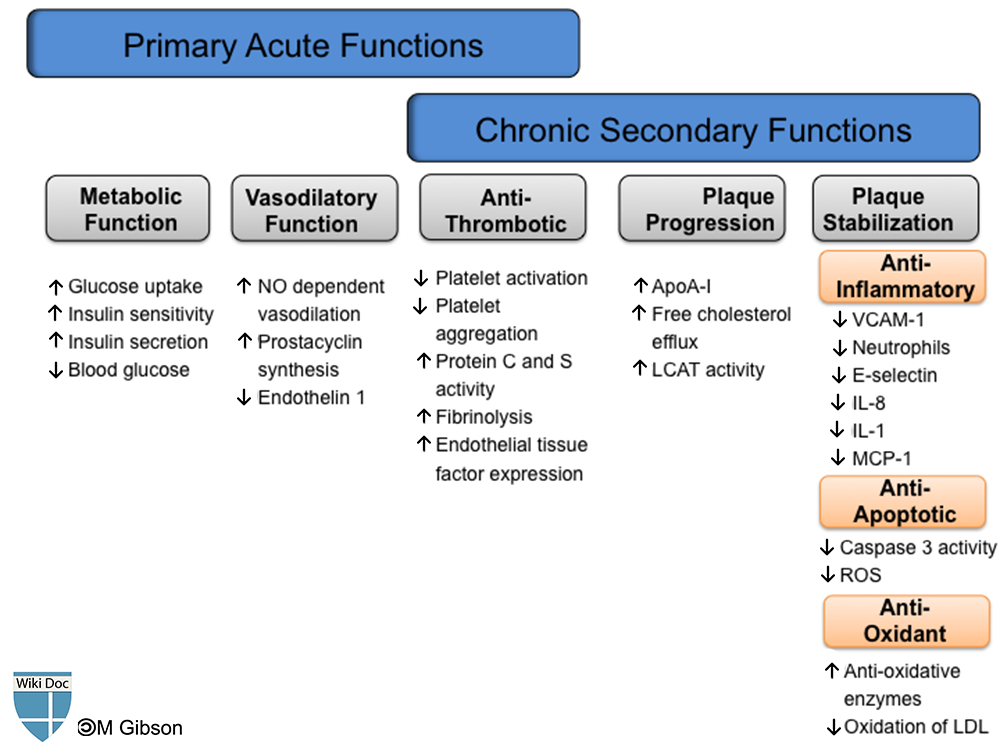WBR0555
Jump to navigation
Jump to search
| Author | [[PageAuthor::Ayokunle Olubaniyi, M.B,B.S [1] (Reviewed by Yazan Daaboul, M.D.)]] |
|---|---|
| Exam Type | ExamType::USMLE Step 1 |
| Main Category | MainCategory::Biochemistry |
| Sub Category | SubCategory::Cardiology |
| Prompt | [[Prompt::The "HDL hypothesis" suggests that high density lipoprotein-cholesterol (HDL-C) is inversely associated with atherosclerosis, and HDL-C has a protective role against cardiovascular disease. What is the main mechanism involved in the anti-atherogenic properties of HDL-C?]] |
| Answer A | AnswerA::Synthesis of prostacylin |
| Answer A Explanation | [[AnswerAExp::HDL may have a role in the increase of blood flow in patients with endothelial dysfunctions. This is carried out by its effect on vasodilation and prostacyclin synthesis. However, the anti-atherogenic properties of HDL-C are not derived from its association with prostacyclin synthesis.]] |
| Answer B | AnswerB::Caspase 3 activity |
| Answer B Explanation | AnswerBExp::Caspase 3 initiates apoptosis (programmed cell death) in cells. HDL, through its effect on caspase 3, prevents apoptosis in cells. It also reduces the generation of reactive oxygen species (ROS). |
| Answer C | AnswerC::Protein C and S activity |
| Answer C Explanation | AnswerCExp::HDL functions in preventing thrombus formation in the arteries through an effect on platelet activation and aggregation, which results in increased protein C&S activity, fibrinolysis, and endothelial tissue factor expression. |
| Answer D | AnswerD::Free cholesterol efflux from cells |
| Answer D Explanation | [[AnswerDExp::HDL cholesterol efflux uses the reverse cholesterol transport system (transport of cholesterol from the periphery to the liver), consisting of receptors such as ABCA1, scavenger receptors, and enzymes e.g., lecithin:cholesteryl acetyltransferase (LCAT) and cholesterylester transfer protein (CETP).]] |
| Answer E | AnswerE::Insulin secretion and sensitivity |
| Answer E Explanation | AnswerEExp::HDL increases insulin secretion through AMP-activated protein kinase in skeletal muscle, thus, mediating glucose metabolism especially among patients with type 2 diabetes. |
| Right Answer | RightAnswer::D |
| Explanation | [[Explanation::HDL is important anti-atherogenic lipoprotein that has been demonstrated to play a significant protective role against cardiovascular disease. Early studies have postulated that the quantity of HDL-C is inversely associated with atherosclerosis and have suggested that higher HDL-C concentrations are cardioprotective. More recent evidence, however, has failed to demonstrate a relationship between the quantity of HDL-C and atherosclerosis. Genetic and clinical studies have concluded that HDL-C efflux capacity, defined as the HDL-C ability to accept cholesterol from macrophages, is a more important factor in the the evaluation of the anti-atherogenic properties of HDL-C than HDL-C concentration alone. HDL cholesterol efflux uses the reverse cholesterol transport system (transport of cholesterol from the periphery to the liver), consisting of receptors such as ABCA1, scavenger receptors, and enzymes e.g., lecithin:cholesteryl acetyltransferase (LCAT) and cholesterylester transfer protein (CETP).
 Educational Objective: HDL-C efflux capacity, defined as the HDL-C ability to accept cholesterol from macrophages, is a more important factor in the the evaluation of the anti-atherogenic properties of HDL-C than HDL-C concentration alone. |
| Approved | Approved::Yes |
| Keyword | WBRKeyword::HDL, WBRKeyword::HDL physiology, WBRKeyword::HDL functions, WBRKeyword::Reverse cholesterol transport, WBRKeyword::Efflux capacity, WBRKeyword::HDL hypothesis |
| Linked Question | Linked:: |
| Order in Linked Questions | LinkedOrder:: |